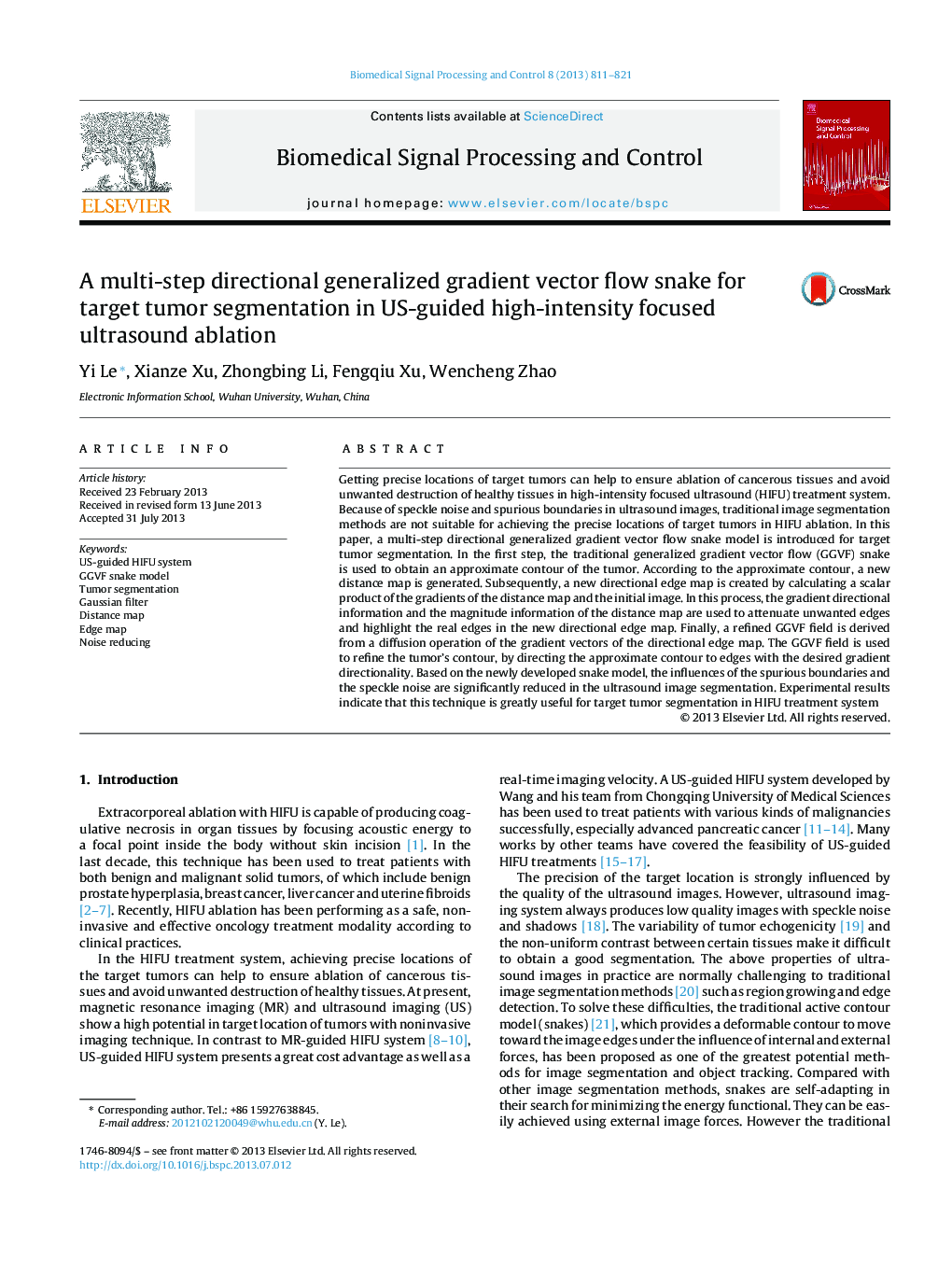| Article ID | Journal | Published Year | Pages | File Type |
|---|---|---|---|---|
| 10368444 | Biomedical Signal Processing and Control | 2013 | 11 Pages |
Abstract
Getting precise locations of target tumors can help to ensure ablation of cancerous tissues and avoid unwanted destruction of healthy tissues in high-intensity focused ultrasound (HIFU) treatment system. Because of speckle noise and spurious boundaries in ultrasound images, traditional image segmentation methods are not suitable for achieving the precise locations of target tumors in HIFU ablation. In this paper, a multi-step directional generalized gradient vector flow snake model is introduced for target tumor segmentation. In the first step, the traditional generalized gradient vector flow (GGVF) snake is used to obtain an approximate contour of the tumor. According to the approximate contour, a new distance map is generated. Subsequently, a new directional edge map is created by calculating a scalar product of the gradients of the distance map and the initial image. In this process, the gradient directional information and the magnitude information of the distance map are used to attenuate unwanted edges and highlight the real edges in the new directional edge map. Finally, a refined GGVF field is derived from a diffusion operation of the gradient vectors of the directional edge map. The GGVF field is used to refine the tumor's contour, by directing the approximate contour to edges with the desired gradient directionality. Based on the newly developed snake model, the influences of the spurious boundaries and the speckle noise are significantly reduced in the ultrasound image segmentation. Experimental results indicate that this technique is greatly useful for target tumor segmentation in HIFU treatment system
Related Topics
Physical Sciences and Engineering
Computer Science
Signal Processing
Authors
Yi Le, Xianze Xu, Zhongbing Li, Fengqiu Xu, Wencheng Zhao,
